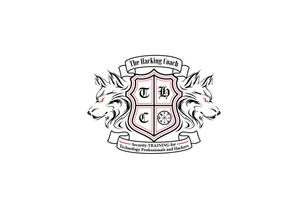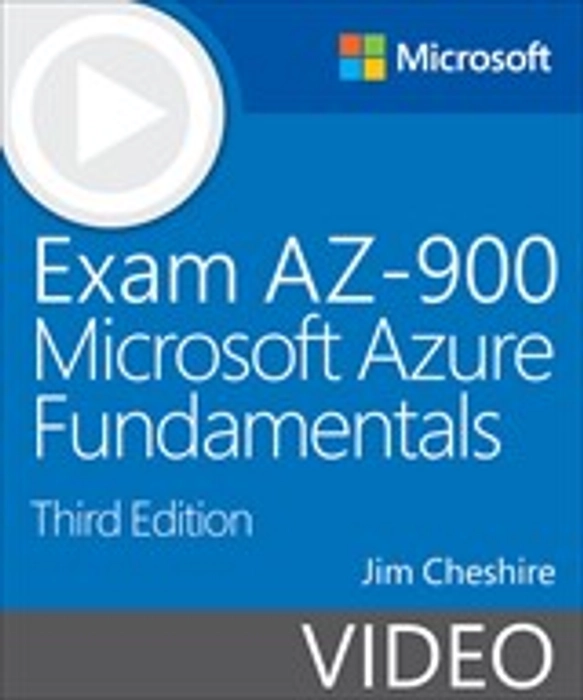MICROSOFT PRESS EXAM AZ-900 MICROSOFT AZURE FUNDAMENTALS
Product details
Exam AZ-900 Microsoft Azure Fundamentals (Video), 2nd Edition
5 Hours of Video Instruction
Includes coverage of the November 2020 exam updates!
Prepare for Microsoft Exam AZ-900 and demonstrate your foundational-level knowledge of cloud services and how Microsoft Azure can provide those services.
Exam AZ-900 Microsoft Azure Fundamentals (Video), Second Edition, is designed for professionals in any non-technical or technical role who want to take a first step toward expanding their understanding of cloud services and cloud-based solutions using Microsoft Azure. This video focuses on the skills measured by the exam objectives:
- Describe cloud concepts
- Describe core Azure services
- Describe core solutions and management tools on Azure
- Describe general security and network security features
- Describe identity, governance, privacy, and compliance features
- Describe Azure cost management and Service Level Agreements
For more than 20 years, instructor and author Jim Cheshire has worked at Microsoft in various roles, most recently in technical readiness across the entire Azure business. In this video, Jim shares his insights and organizes coverage by exam objective to help you make the most effective use of your study and exam prep time.
Customer Review
"Brilliantly and clearly presented, and Jim Cheshire is a great presenter. And, can I say this - this is MUCH better than the PluralSight AZ900 preparation course, which I also watched. Well organized and easy to understand."
Skill Level
- Beginner
Who Should Take This Course
- Certification candidates preparing for exam AZ-900 Microsoft Azure Fundamentals
- Anyone who needs to demonstrate a foundational-level understanding of cloud services and cloud-based solutions with Microsoft Azure
- Anyone who wants to take a first step in learning Microsoft Azure concepts and terminology
Course Requirements
This video assumes no prior knowledge of Azure or cloud services.
Table of Contents
Introduction
Module 1: Describe Cloud Concepts
Lesson 1: Identify the benefits and considerations of cloud services
Learning objectives
1.1 Understand high availability
1.2 Understand scalability, elasticity, and agility
1.3 Describe fault tolerance and disaster recovery
1.4 Explain economic benefits of the cloud
Lesson 2: Describe the differences between categories of cloud services
Learning objectives
2.1 Describe the shared responsibility model
2.2 Describe infrastructure-as-a-service
2.3 Describe platform-as-a-service
2.4 Describe software-as-a-service
2.5 Describe serverless computing
2.6 Identify a service type based on a use case
Lesson 3: Describe the differences between types of cloud computing
Learning objectives
3.1 Define cloud computing
3.2 Define public cloud
3.3 Define private cloud
3.4 Define hybrid cloud
Module 2: Describe Core Azure Services
Lesson 4: Describe core Azure architectural components
Learning objectives
4.1 Describe the benefits and usage of Regions and Region Pairs
4.2 Describe the benefits and usage of Availability Zones
4.3 Describe the benefits and usage of Resource Groups
4.4 Describe the benefits and usage of subscriptions
4.5 Describe the benefits and usage of management groups
4.6 Describe the benefits and usage of Azure Resource Manager
4.7 Explain Azure resources
Lesson 5: Describe core resources available in Azure
Learning objectives
5.1 Describe Azure Virtual Machines
5.2 Describe Azure App Service
5.3 Describe Azure Container Instances (ACI)
5.4 Describe Azure Kubernetes Service (AKS)
5.5 Describe Windows Virtual Desktop
5.6 Describe Virtual networks
5.7 Describe VPN Gateway
5.8 Describe virtual network peering
5.9 Describe ExpressRoute
5.10 Describe Container (blob) storage
5.11 Describe Disk storage
5.12 Describe Azure Files
5.13 Describe Storage tiers
5.14 Describe Cosmos DB
5.15 Describe Azure SQL Database
5.16 Describe Azure Database for MySQL
5.17 Describe Azure Database for PostgreSQL
5.18 Describe the Azure Marketplace and its usage scenarios
Module 3: Describe Core Solutions and Management Tools on Azure
Lesson 6: Describe core solutions available in Azure
Learning objectives
6.1 Describe Azure IoT Hub
6.2 Describe IoT Central
6.3 Describe Azure Sphere
6.4 Describe Azure Synapse Analytics
6.5 Describe Azure HDInsight
6.6 Describe Azure Databricks
6.7 Describe Azure Machine Learning
6.8 Describe Cognitive Services
6.9 Describe Azure Bot Service
6.10 Describe Azure Functions
6.11 Describe Logic Apps
6.12 Describe Azure DevOps
6.13 Describe Azure DevTest Labs
6.14 Describe GitHub and GitHub Actions
Lesson 7: Describe Azure management tools
Learning objectives
7.1 Describe the Azure portal
7.2 Describe Azure PowerShell
7.3 Describe Azure CLI
7.4 Describe Azure Cloud Shell
7.5 Describe Azure mobile app
7.6 Describe Azure Advisor
7.7 Describe Azure Resource Manager (ARM) templates
7.8 Describe Azure Monitor
7.9 Describe Azure Service Health
Module 4: Describe General Security and Network Security Features
Lesson 8: Describe Azure security features
Learning objectives
8.1 Describe Azure Security Center
8.2 Describe Key Vault
8.3 Describe Azure Sentinel
8.4 Describe Azure Dedicated Host
Lesson 9: Describe Azure network security
Learning objectives
9.1 Describe defense in depth
9.2 Describe Network Security Groups (NSGs)
9.3 Describe Azure Firewall
9.4 Describe Azure DDoS Protection
Module 5: Describe Identity, Governance, Privacy, and Compliance Features
Lesson 10: Describe core Azure identity services
Learning objectives
10.1 Explain authentication and authorization
10.2 Describe Azure Active Directory
10.3 Describe conditional access, multi-factor authentication (MFA), and single sign-on (SSO)
Lesson 11: Describe Azure governance features
Learning objectives
11.1 Describe role-based access control
11.2 Describe resource locks
11.3 Describe tags
11.4 Describe Azure Policy
11.5 Azure Blueprints
11.6 Describe the Cloud Adoption Framework for Azure
Lesson 12: Describe privacy and compliance resources
Learning objectives
12.1 Describe the Microsoft core tenets of security, privacy, and compliance
12.2 Describe the Microsoft Privacy Statement
12.3 Describe Online Service Terms (OST) and Data Protection Amendment (DPA)
12.4 Describe the Trust Center
12.5 Describe the purpose of the Azure compliance documentation
12.6 Describe Azure sovereign regions
Module 6: Describe Azure Pricing, SLAs, and Service Lifecycles
Lesson 13: Describe methods for planning and management of costs
Learning objectives
13.1 Identify factors affecting costs
13.2 Describe the Pricing calculator
13.3 Describe the Total Cost of Ownership calculator
13.4 Describe Azure Cost Management
Lesson 14: Describe Azure service level agreements (SLAs) and service lifecycles
Learning objectives
14.1 Describe Azure service level agreements (SLAs)



